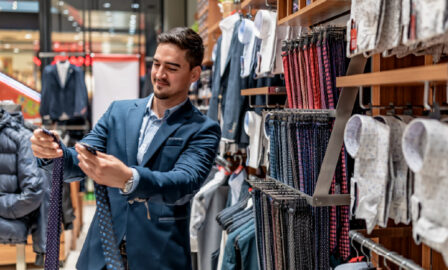The Benefits of Experiential Retail
When was the last time you really had fun shopping? According to a recent Squire Patton Boggs report, entertainment is “the most important aspect of a meaningful retail experience.” Moreover, younger shoppers care even more about their experience while shopping. In response, retailers continue to find new ways to bring “experiential retail” to life. Be it an art or a yoga class or a digital catwalk, leading retailers are finding creative ways to use their store space to provide novel customer experiences. In this piece, we explore some of the benefits of experiential retail and how it will be a critical trend for 2023 and beyond.
What is Experiential Retail?
Experiential retail differs from traditional retail in the following ways: it creates immersive and personalized experiences, prioritizes customer engagement, strives for memorable, multi-sensory interactions that are captivating, and even inspires customers to share these moments via social media.
Why does it matter? Experiential retail is a trend that will only grow in prominence as it caters to younger shoppers’ interest in experiences that are immersive and entertaining. These events captivate customers and drive foot traffic and interest in whatever product or service is featured. H&M’s new “store experience” in Brooklyn features “chapters:” a four- to twelve-week display of particular H&M items along with seasonal goods from local vendors. The merchandise is situated and displayed in a way “to help [customers] imagine the places they could wear the retailer’s clothing, accessories, and footwear.” In addition, fitting rooms are equipped with smart mirrors so shoppers can make requests from a full range of styles, looks, and sizes right in the dressing room.
In experiential retail, customers are not only immersed in the products on display, but they’re also given an opportunity for more meaningful interaction and connection. This is of particular importance, as retailers serve to gain customer loyalty by communicating authenticity and relatability with their shoppers. For example, at Glossier stores, showroom editors offer peer-to-peer recommendations and ascribe to the ethic that if you focus on creating an experience that engages with customers, they will respond with their loyalty and their buying power. In this way, experiential retail allows companies to curate an experience that expands their brand, creates a sense of community, and provides novel ways to better understand their customers. This also aligns with the larger trend in which consumers seek out brands that reflect and uphold their values and market items that they can integrate into their lifestyle.
Showfields, for example, promises to provide unforgettable in-store experiences as a “culture hub” for innovative brands and products while providing product launch parties and influencer dinners. In this way, the retail space becomes an arena for building community and a gateway to stronger customer engagement.
The potential to build relationships through memorable moments and exclusive events allows for a “give and take” for brands to know their customers and simultaneously expand and adapt how they define themselves.
First-Party Data Capture in Experiential Retail
In addition to the social and relational benefits for experiential retail, significant opportunities also exist for customer data capture. In particular, experiential retail provides an avenue to pursue first-party data (or, data collected directly from a customer), where retailers can learn about their participants through a range of contact points: point of sale and CRM, purchase history, digital shopping screens, and augmented reality for trying products, to name only a few. This data will further allow definition of segments that can be marketed to in the future. New methods to capture first-party data are becoming more critical as Google is poised to phase out third-party data capture on its chrome browser. First-party data has always been desirable but will be all the more critical as third-party cookie marketing streams come to an end.
Looking Ahead
Lastly, experiential retail will grow in prominence because it aligns with the preferences of younger shoppers. Reports indicate Gen Z has and will continue to place more demand for captivating and immersive experiences as part of their shopping experience. While meeting new expectations and catering to the proclivities of Gen Z may be a challenge, experiential retail, when done correctly, can nurture a brand’s online presence. As this cohort ages into a more prominent economic force, their expectations and norms will come to increasingly dictate the market. Retail spaces that cater to the digitally native youth will be better positioned to connect with Gen Z shoppers.
As the data and shopping landscape continues to evolve, Clarkston’s seasoned retail experts can support your journey and provide necessary guidance for your data strategy and customer engagement.
Subscribe to Clarkston's Insights
Contributions from Kevin McDonough



